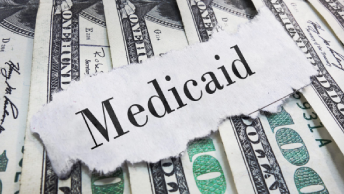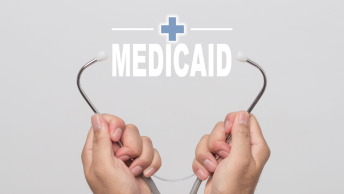El Rio Health - St. Elizabeth's Health Center
Not Like It?
Accepts
Uninsured
Underinsured
Insurance
Medicare
Medicaid
Service Details
- Women's Health
- Primary Care
- Pediatric
- OB/GYN
- Counseling/Mental Health
- Medical
- Health Education/Nutrition
- Dental
- Lab
- WIC
- Pregnancy
- Immunizations
- Adults
- Application Assistance - Rx
- Community Health Worker Services
- Social Services
- Telemedicine
Financial Eligibility
150%
180%
200%
250%
300%
ANY
Supported Language
English
Spanish
Services Area
Cost
Sliding Scale Available
Hours of Operation
- Monday
- Tuesday
- Wednesday
- Thursday
- Friday
2024 US Federal Poverty Guidelines
for the 48 contiguous states and the District of Columbia
| Persons in family / household | Poverty guideline |
|---|---|
| 1 | $14,580 |
| 2 | $19,720 |
| 3 | $24,860 |
| 4 | $30,000 |
| 5 | $35,140 |
| 6 | $40,280 |
| 7 | $45,420 |
| 8 | $50,560 |
For families/households with more than 8 persons, add $5,140 for each additional person.

Nowadays, hundreds of millions of Americans are still suffering from tooth loss in spite of the improvements in dental care. No matter what reason is causing the problem, dental implants might be the best solution. To learn more about the implant, read the following facts about it.
1. What Are Dental Implants?
Dental Implants are artificial replacements for tooth roots. By providing a strong foundation, implants are used for fixed (permanent) or removable replacement teeth, which are made to match the natural ones.
2. Who Can Get Dental Implants?
In general, anyone who's healthy enough to go through a routine dental extraction or oral surgery could be considered for dental implants. Patients should meet the following requirements:
- Having healthy gums and enough bone to hold the implant
- Being committed to good oral hygiene and regular dental visits
Evaluation is required for those who are heavy smokers, suffering from uncontrolled chronic disorders (diabetes or heart diseases), or having had radiation therapy to the head/neck area. However, anyone who's considering getting implants should talk to the dentist for professional suggestions on an individual basis.
3. How Painful Are Dental Implants?
During the procedure, most people who have received dental implants consider there is only very little discomfort, which is less painful than a tooth extraction. Besides, patients may use local anesthesia during the process. Mild soreness may be expected after the dental implant, which could be treated with over-the-counter pain medications.
4. What Is The Success Rate Of Dental Implants?
Dental implants have a success rate of up to 98% in general, yet it will vary depending on where the implants are placed. If with proper care, implants could last a lifetime.
5. How To Care For Dental Implants?
Just like real teeth, dental implants need the same care, including brushing, flossing, rinsing with an antibacterial mouthwash as well as regular dental visits.
6. Could Insurance Cover The Cost Of Dental Implants?
Dental implants are not covered by dental insurance in general yet. However, it’s not impossible to receive free dental implants or at least cheap ones. You might want to check your medical plan since implants may be covered under it depending on the insurance plan and/or cause of tooth loss. More detailed questions should be discussed with the dentist and insurance provider on an individual basis.

Nowadays, hundreds of millions of Americans are still suffering from tooth loss in spite of the improvements in dental care. No matter what reason is causing the problem, dental implants might be the best solution. To learn more about the implant, read the following facts about it.
1. What Are Dental Implants?
Dental Implants are artificial replacements for tooth roots. By providing a strong foundation, implants are used for fixed (permanent) or removable replacement teeth, which are made to match the natural ones.
2. Who Can Get Dental Implants?
In general, anyone who's healthy enough to go through a routine dental extraction or oral surgery could be considered for dental implants. Patients should meet the following requirements:
- Having healthy gums and enough bone to hold the implant
- Being committed to good oral hygiene and regular dental visits
Evaluation is required for those who are heavy smokers, suffering from uncontrolled chronic disorders (diabetes or heart diseases), or having had radiation therapy to the head/neck area. However, anyone who's considering getting implants should talk to the dentist for professional suggestions on an individual basis.
3. How Painful Are Dental Implants?
During the procedure, most people who have received dental implants consider there is only very little discomfort, which is less painful than a tooth extraction. Besides, patients may use local anesthesia during the process. Mild soreness may be expected after the dental implant, which could be treated with over-the-counter pain medications.
4. What Is The Success Rate Of Dental Implants?
Dental implants have a success rate of up to 98% in general, yet it will vary depending on where the implants are placed. If with proper care, implants could last a lifetime.
5. How To Care For Dental Implants?
Just like real teeth, dental implants need the same care, including brushing, flossing, rinsing with an antibacterial mouthwash as well as regular dental visits.
6. Could Insurance Cover The Cost Of Dental Implants?
Dental implants are not covered by dental insurance in general yet. However, it’s not impossible to receive free dental implants or at least cheap ones. You might want to check your medical plan since implants may be covered under it depending on the insurance plan and/or cause of tooth loss. More detailed questions should be discussed with the dentist and insurance provider on an individual basis.

It is very likely to have dental problems, but getting proper dental service can be quite expensive. Do you know that you may use Medicaid to cover part of your dental bills? Check out things you need to know about the benefit and how you may get low-income dental care.
What Is Medicaid?
Medicaid is a federal and state program that helps with healthcare costs for people with limited income and resources in the US. Meanwhile, it offers some benefits not normally covered by Medicare (another government national health insurance program in the United States).
Although the eligibility for Medicaid varies from state to state, it generally falls into the following categories:
- Adults with low income
- Children
- Pregnant women
- People with disabilities
* How each category is defined depends on which state it is.
Medicaid Dental For Children
It is mandatory for the government to provide dental help for children from low-income families. All states are required to provide dental benefits to children covered by Medicaid.
Such benefits are listed under the EPSDT (the Early and Periodic Screening, Diagnostic and Treatment) benefit. So, if a child has Medicaid dental insurance, it means these services are covered:
- Pain relief and infection treatment
- Tooth restoration
- Dental health maintenance
- Any service that is determined to be medically necessary
Medicaid Dental For Adults
For adults, getting dental help that's covered by Medicaid can be a bit more complex because the eligibility for such benefits is chosen by each state. For better understanding, you may check the detailed Medicaid Adult Dental Benefits Coverage by State.
The Difference Between Medicaid And Medicare
The two programs are both aim to help people with limited conditions when it comes to health issues. However, there are certain differences between the eligibility and coverage of the two programs.
The biggest difference between the two is that Medicaid covers healthcare costs for those with low incomes while Medicare provides benefits for the elderly. As for the specific benefits, please check the official website of Medicare and Medicaid for accurate information.
How To Find Dental Care Accept Medicaid Near Me?
You may check out dental clinics near you first with the directory button below, then simply call an office and ask whether they accept Medicaid or not.

Dental service is kind of necessary for almost everyone at some point in their life. Before you get scared away by the costly bill of this medical care, there might be a certain chance for government medical insurance to cover part of it. Take a look at how Medicare works for dental care.
What Is Medicare?
In short, Medicare is a federal health insurance program for people who fall into one or more of the following categories:
- Individuals who are 65+
- Individuals younger than 65 with disabilities
- Individuals with End-Stage Renal Disease
Also, there are 3 different types of Medicare:
- Medicare Part A covers hospital insurance
- Medicare Part B covers medical insurance
- Medicare Part D covers prescription drugs
More specifically, Part A covers inpatient hospital stays, care in a skilled nursing facility, hospice care, and certain home health care. Part B covers some doctors' services, outpatient care, medical supplies, and preventive services.
What Are Medicare Dental Benefits?
In some cases, Medicare Part A may cover dental care, including:
- A hospital stay involving dental work
- Emergency dental Medicaid care
There may also be some private insurers offering Medicare Advantage Plans. They have to cover everything that Original Medicare covers (Part A, B, D) and sometimes offer additional dental coverage as well. For instance:
- Exams
- X-rays
- Cleanings
- Diagnostic services
- Restorative services (fillings)
- Root canal treatment
- Gum disease treatments
- Extractions
- Crowns, bridges, implants, dentures
* For reference only
If you are seriously considering Medicare for dental coverage, please check the official website for accurate information. Besides, don't forget to check with your dentist about whether the clinic you go to accepts Medicare coverage. You may simply use the directory button below to find dental clinics near you and call for more detailed information.

The high cost of dental treatment can be unaffordable, so people will want to look for dental insurance that covers it, which may include Medicaid and Medicare. Medicaid and Medicare are two kinds of insurance for different groups of people and various situations. Before making a choice, you need to know the difference between them to decide which is more suitable for your situation.
Who Is Covered By Medicaid And Medicare?
Medicare
Medicaid is a type of federal health insurance primarily for seniors. It applies to people 65 or older in most cases, and to a lesser extent, to some people under 65 with specific disabilities or conditions.
Medicaid
Medicaid is a joint federal and state program that primarily helps people with low-income or limited resources. According to the specific policies of each state, Medicaid typically faces groups including but not limited to low-income adults, pregnant women, the disabled, and children.
* May vary based on regional policies.
What's The Regional Difference Between Medicare And Medicaid Policies?
Medicare
Medicare is a federal program that sets detailed standards for costs and coverage. So no matter which state you live in, Medicare coverage is the same.
Medicaid
The federal government sets general rules that must be followed for all state Medicaid programs, but each state runs its own program for different medical conditions. Therefore, Medicaid eligibility requirements and benefits may have various regulations in each state, and you need to decide whether it applies to you according to your state.
What Are The Dental Benefits Of Medicare?
Original Medicare normally includes Medicare Part A (Hospital Insurance) and Part B (Medical Insurance). As long as you are enrolled in Part A and Part B, you can choose how you access your health insurance. As for dental benefits, Medicare does not cover any dental services directly, while Medicare Part A may help you if an urgent or complex dental surgery is required and hospitalization is involved.
Notably, dental services not covered by Medicare include, but are not limited to procedures and supplies such as cleanings, fillings, tooth extractions, dentures, dental plates, or any dental equipment.
What Are The Dental Benefits Of Medicaid?
For Adults
Dental benefits for adult Medicaid enrollees vary from state to state. While most states provide at least emergency dental services for adults, less than half currently offer comprehensive dental care. Notably, there are no minimum requirements for adult dental coverage.
For Children
Medicaid provides coverage for dental services to all child enrollees as part of a comprehensive benefit called the Early and Periodic Screening, Diagnostic and Treatment (EPSDT) benefit. Dental services for children must include at least: pain and infections relief, restoration of teeth, and maintenance of dental health. The EPSDT benefits require all services provided if they are determined to be medically necessary.
* May be adjusted according to relevant policies.

It is acknowledged that oral health is crucial to the overall health and well-being of people. While dental caries is the most common chronic disease among adults and children in the United States, other oral diseases like tooth decay, gum disease, and oral cancer also greatly impact people’s daily life. To change the situation, Medicaid, as an insurance program, offers a number of citizen-friendly policies to make dental services more affordable, so that to improve access to dental and oral health services.
What is known based on relevant and transparent data is that Medicaid and CHIP(Children's Health Insurance Program) spending on dental services increased each year between 2018 and 2021, from $14.8 billion to $17.8 billion. This part of the expenditure has solved oral problems for so many people and encouraged the public to pay attention to their oral health.
* Data from 2023 Medicaid & CHIP Beneficiaries at a Glance: Oral Health.
For Adults
Medicaid extensively covers about 24 states to provide dental services by 2022, while other states have limited dental services. Only three states have no Medicaid coverage at all for dental services, but subsequent efforts may be taken to achieve the goal soon.
For Children
Statistically, the percentage of children and adolescents aged 1 to 20 who are enrolled in Medicaid for at least 90 consecutive days receiving dental services is also slowly increasing between 2000 and 2020. What is even more encouraging is that preventive dental services account for a much higher percentage than oral treatment, which somehow indicates that people are taking their oral health more seriously with the help of Medicaid.
For Pregnant Women
The coverage in Medicaid is designed to make it easier for people to access treatment when they need it. The oral health of pregnant women also deserves attention, and most states offer more comprehensive dental benefits for the pregnant population than for the general adult population.
* Specific policies may vary by region.
